|
|
Post by glactus on Jan 29, 2011 2:29:15 GMT
A leading U.S. astronomer says there is no hope of finding alien life in space because all other planets discovered so far are to hostile for life. 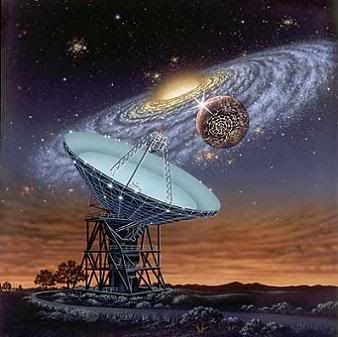 Of men and galaxies Howard Smith, a senior astrophysicist at Harvard University, says he believes humans are alone in the universe, following an analysis of the 500 planets discovered so far that shows they are all hostile to life, Britain's Daily Telegraph reported Monday.  Galactic structures. Every dot is a galaxy "We have found that most other planets and solar systems are wildly different from our own," he says. "They are very hostile to life as we know it." 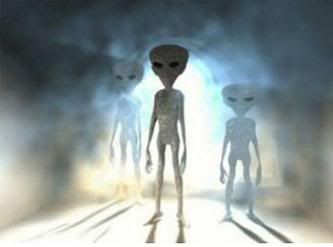 The intelligent aliens Smith insists extrasolar planets are too different from our own and even if they did support life it would be impossible for us to contact it. 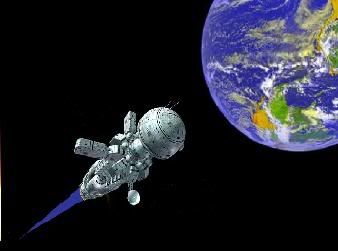 Aliens. Will they ever reach us? "Any hope of contact has to be limited to a relatively tiny bubble of space around the Earth, stretching perhaps 1,250 light years out from our planet, where aliens might be able to pick up our signals or send us their own," he says. "But communicating would still take decades or centuries." There are, however, other Astronomers who firmly believe that life is widespread in the Universe. The amount of stars harboring planetary systems are just too colossal for the law of averages not to play it's part in our calculations, for even if there were only two civilizations in the whole Milky Way galaxy, then there would be hundreds of billions of such civilizations in the entire Universe. We have not been visited because distances are so great that if an alien civilization were to embark on such a mammoth undertaking, mortality would defeat them.  Alien visitors Credits: These are free web images. Text by Howard Smith, a senior astrophysicist at Harvard University. Follow on text by Glactus |
|
|
|
Post by authorgonal on Feb 4, 2011 21:19:56 GMT
Analysis of 500. Hmm the most crude tech for early discovery.
When spotting gas giants much easier than small rockies. But then stats... need to know the logic.
The mega co-incidences re Earth are legion. We need to get to the gas gIant moons and check em out for life. They should have it!!
If they don't then I guess we might be more special than we think
|
|
|
|
Post by starrdawg on Feb 4, 2011 22:37:03 GMT
Life, or INTELLIGENT lifeform? There is a major difference. Its a given that "life" exists on many moons/planets discovered so far, and many more will be found. I doubt if ET will stop around for a Big Mac, and fries anytime soon though.  |
|
|
|
Post by glactus on Feb 5, 2011 3:37:56 GMT
A big Mac freeze? You may be right R.J. for the most significant paragraph on this post is the one below. Evidently we only have a narrow window in which to search anyhow. "Any hope of contact has to be limited to a relatively tiny bubble of space around the Earth, stretching perhaps 1,250 light years out from our planet, where aliens might be able to pick up our signals or send us their own," he says. "But communicating would still take decades or centuries."  Will we ever be able to say - "gidday mate" Maybe Alma will come up with something and we can all duck for cover. 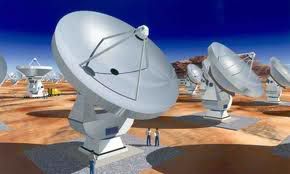 Alma  alien - Is he out there? |
|
|
|
Post by starrdawg on Feb 6, 2011 13:00:53 GMT
The "window" for searching is not limited as such. There are just too many search directions to contend with.
The choices so far are pretty arbitrary. With a "most likely" area of the sky to spend countless decades to search, there are still directions we have yet to spend time on both optically, and electronically.
The privately funded SETI program is trying to fill some of the gaps, but like its "commercial" counterpart; funding is the problem, and always will be.
SETI even has an "at home" project where volunteers can download a packet of data to their computers and let their software search for potential signals. The packets are current "raw" data that can take a few days to get a full analysis on with private computers, but it helps the overall program.
|
|
|
|
Post by glactus on Feb 6, 2011 18:21:40 GMT
Yes you are right. When pertaining to the Universe and the possibility of life elsewhere, there are too many pointers in the positive direction. The first one being that the building blocks of life are abundant in the Universe, so they are not only contained to this Galaxy or this Solar System. That alone should tell us something. The second one is that most astronomers believe that comets play a big part in seeding the environments of planets with these building blocks, for they collect and freeze matter as they speed between the stars, shedding them as they enter the thermal zone of a star, right in the path of the planets. When the probe returned that was send to Haley's to test the theory that it is a carrier of building blocks of life, it was found to be full of them. The third one is the law of averages. There are just too many Solar Systems in the Universe for the law of averages not to play its part, as it does in our every day life, in all areas of science and in Astronomy.  Sombrero |
|
|
|
Post by starrdawg on Feb 6, 2011 23:04:54 GMT
I see that we have already discovered over 400 solar systems in our galaxy alone that are candidates for some type of "lifeform". No telling how many potentials there are in other galaxies we cant even "touch" yet.  Latest from our "food police" would probably not allow ET to order a Big Mac burger even if he did visit due to all the fat and preservatives in it.  Oh well.  |
|
|
|
Post by Andy Mac on Feb 23, 2011 21:24:31 GMT
Life, or INTELLIGENT lifeform? There is a major difference. ............................. I doubt if ET will stop around for a Big Mac, and fries anytime soon though.  Just a late thought............................ If ET was even contemplating eating at one of those burger joints, should we be classifying him/her/it as intelligent life??    |
|
|
|
Post by glactus on Feb 28, 2011 9:45:12 GMT
Tiny Earths may be there. Consider this interesting point. The level of technology attained by Earthlings is finding the gas giants that do not support life, but we cannot see the little ones around these giants that do, or may do. In other words, if an alien civilization were to use our level of technology is searching for ET, and searched in our direction, they would have found Jupiter, our huge gas giant, and would not have been able to detect a tiny planet, the third from the Sun and teeming with life, the tiny planet Earth. Our planet very very small. So don't give up yet. It won't be too long before we will be able to detect tiny worlds around these gas giants, and then it may be a different story altogether.  The tiny Earth  The Cat's eye |
|
|
|
Post by authorgonal on Aug 4, 2011 12:09:08 GMT
Hear about the guy with the external heart? Seen our soldiers with artificial limbs? Watched that guy with artificial legs and feet out running normal athletes? Heard about the professor who wants to wire-in a computer to enhance his brain? Observed the mega computers winning at chess? Played the software life evolution stuff? Don't expect organic life necessarily. Robotic life may not have our limitations. Especially 'sleep mode'  . 2x speed mode  . Self repair mode  Taking the Micky mode  Oh poor things mode  Probably already been and gone. Not a lot of common ground. I suppose they might take a few cells off of any organic life lying around and grow it up once here. Then release - just for fun. Maybe build in a genetic 'drop dead' device as well as recording stuff. We'd probably bore most of 'em silly. Anyway what's all this about intelligence? Great apes make tools - big deal. My dog breaks dead branches off trees and then breaks suitable twigs to size by levering em on the ground until he has something he can run with and can tempt me to fight him for. He carefully grips it so that one end sticks out so that my hand can grab it - if I am fast enough.. Ok most dogs love to play this game but mine is tough enough to break branches to size. Tools? Don't make me laugh.. the physical limitations are as important if not more so. My dog is brighter than me and apes ;D. Anyway even organics might have physical attributes making a few light years child's play. If not then genetic engineering will provide it. Come on think outside the box!!  There will always be miserable fellas ready to hang you  PS Synthetic brains are a long way from reality, but researchers at the University of Southern California, funded by the National Science Foundation, are taking the first steps to build neurons from carbon nanotubes that emulate human brain function.......... www.nsf.gov/discoveries/disc_summ.jsp?cntn_id=112947&org=NSF |
|
|
|
Post by glactus on Aug 4, 2011 19:59:15 GMT
Ok! What we are missing is the "Can see" factor. When we look around us, what do we see? We see millions of different life forms, the animals, the birds, the fish, the insects and the crawly things, and of course one species called humankind. So in our quest to find life elsewhere, that should tell us something - we can actually see that the building blocks of life are very easily incubated into life forms. The millions of different life forms on Earth tell us so, for we can embrace the "Can see factor"right here in our own back yard. We have proof that the building blocks of life are abundant in the Universe and these building blocks of life do not come in a sealed package with different types of building blocks and different laws for each solar system, they are Universal. The comets pick them up in their set orbits between the Stars, freeze them, and when they are in the heat zone of a star, they distribute them right in the path of the Planets. Because the comets are in a set orbit, they come back to that same star again and again to make sure they have done a good job. "If I didn't get you this time pal, I'll get you next time". This goes on in every planet in our solar system, every Solar system in our Galaxy, and every galaxy in the Universe. Seeding goes on in planets that are and are not in the habitable zone, and all get a dose, again and again by the return of the comets. How can there not be life elsewhere.  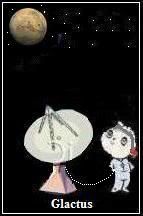 Listening for ET |
|
|
|
Post by authorgonal on Aug 5, 2011 5:56:06 GMT
Ha! Read this Nasa being cautious not to go too far "The flows are not dark because of being wet," McEwen said. "They are dark for some other reason." A flow initiated by briny water could rearrange grains or change surface roughness in a way that darkens the appearance. How the features brighten again when temperatures drop is harder to explain. www.nasa.gov/home/hqnews/2011/aug/HQ_11-245_Mars_Water.htmlOk I'll say it : Bacteria is causing a darkening due to water release in summer, obvious or not? |
|
|
|
Post by glactus on Aug 6, 2011 9:27:19 GMT
Well I am hoping it is salt water. If it is then it will be a huge bonus.   |
|
















 Oh well.
Oh well. 



 . 2x speed mode
. 2x speed mode  . Self repair mode
. Self repair mode  Taking the Micky mode
Taking the Micky mode 